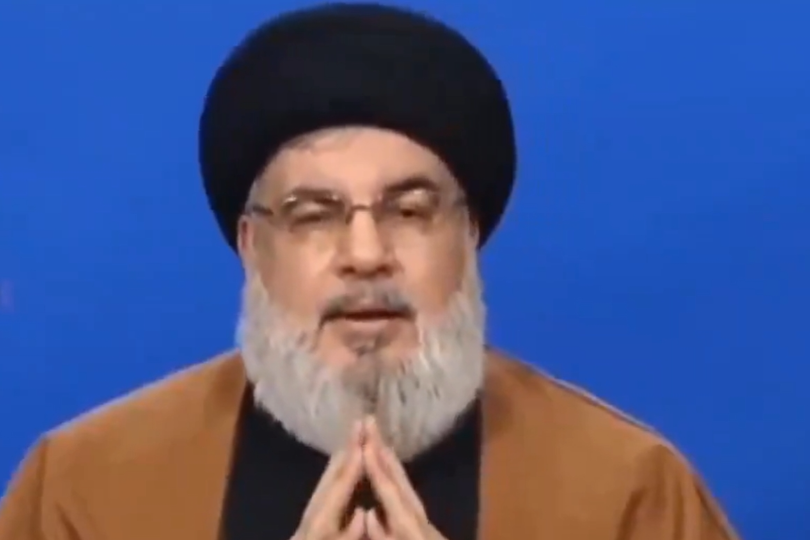Hezbollah Escalates Attacks from Lebanon After Israeli Strike Kills Key Leader
ON 06/21/2024 AT 12 : 15 AM

On June 18, after increased cross-border attacks by Hezbollah across the Lebanon border, Israeli Defense Forces launched an air strike into a target identified as a command post housing multiple senior Hezbollah officials.
Located just 6 miles north of the Israeli border, the post is claimed by Israel as one of the more important military locations where Hezbollah forces are located. Hezbollah, a long-time foe of Israel since the country first launched one of its biggest offensive military operations across the border to its multiple locations in Lebanon, is aligned with Hamas, the group responsible for political and military leadership in the Gaza Strip.
After Israel began its punitive brutal war in Gaza after Hamas launched its invasion into the northern Israeli site where the music festival was happening on October 7, Hezbollah began its own wave of counterattacks into Israel from the north. Hezbollah and Israeli forces have exchanged fire almost every day since October 7.
Hezbollah has pledged it will continue those attacks into northern Israel until a permanent ceasefire takes hold in Gaza.
The June 18 airstrike took out Taleb Sami Abdullah, one of the most senior officials of Hezbollah, along with several others at the site. According to Hezbollah sources, Abdullah was the commander of the group’s Nasr unit. That is the Hezbollah forces division responsible for much of the attacks along the northern Israel border. It includes the region near Kiryat Shmona, a major settlement in northern Israel where there have been many attacks in recent weeks.
Abdullah’s remains were gathered quickly by Hezbollah soldiers after the attack. It was then brought to Beirut and transferred to Abdullah’s hometown of Aadschit. Abdullah’s funeral was held there yesterday afternoon.
Hezbollah senior leader Hachem Saffieddine vowed during the funeral ceremony for something far more than just revenge against Israel, taking an ongoing conflict which has already grown far more intense as Israeli forces began their vicious ground attacks against Rafah, at the southern border of Gaza.
“Our response after the martyrdom of Abu Taleb will be to intensify our operations in severity, strength, quantity and quality,” Saffieddine said during the ceremony honoring Abdullah. “Let the enemy wait for us in the battlefield.”
Even before he made that statement, Saffieddine had already begun making good on that vow. Hezbollah forces launched their own counterattacks at multiple Israeli forces posts in northern Israel. The Israeli government said the attacks included some 215 separate projectiles striking just south of the Lebanon border. Hezbollah said its targets were military bases in that region.
No immediate deaths or injuries were reported from Wednesday’s attacks.
After that counterattack, Hezbollah chief Hassan Nasrallah declared that if the war with Israel were to grow even bigger, there would soon be “no place” in the country which would be safe for anyone.
Nasrallah also issued a clear threat to the government of Cyprus, which has provided base support for Israeli military equipment provided by countries in Europe and the United States for its genocidal war on Gaza, that it too might become part of the conflict if it continued to support Israel in this way.
These threats and the Wednesday morning attacks were followed yesterday which included another major back-and-forth series of air raids by Israel and Hezbollah on each other’s bases of operation.
“In response to the assassination that the Israeli enemy carried out in the village of Deir Kifa,” where Abdullah was killed on June 18, Hezbollah spokespeople said its forces had fired “dozens of Katyusha rockets” on barracks housing Israeli military personnel reportedly linked to Abdullah’s death.
Israeli sources acknowledged it attacked multiple Hezbollah targets at the same time.
One airstrike in Lebanon’s Deir Kifa region, conducted via a drone, killed an individual Hezbollah identified as a “fighter” and which Israel said in a statement after the run that was an officer “responsible for planning and carrying out terror attacks against Israel and commanding Hezbollah ground forces” in Jouaiyya, a region in southern Lebanon where multiple Hezbollah forces are routinely stationed.
A spokesperson for the Israeli Defense Forces also said that a separate strike by Israeli fighter jets had seriously damaged “a Hezbollah surface-to-air missile launcher that posed a threat to aircraft operating over Lebanon.”
Around midday on June 21, Israel time, Israel struck southern Lebanon again. This time it was in the town of Al Wazzani in southern Lebanon, again with aerial attacks. As of this writing, no information is available regarding casualties and property damage.
If past trends continue, Hezbollah will counter that attack with another of their own, possibly by day end, but at the latest by tomorrow morning.
After this week’s events, Israel said it had “operational plans for an offensive in Lebanon [which] were approved and validated.”
These plans will reportedly take into account concerns being raised publicly by the United States that it believes Hezbollah’s armed forces and weaponry are strong enough and sophisticated enough to penetrate Israeli’s U.S.-supplied Iron Dome missile defense systems. That statement came earlier this week, shortly after earlier this week Hezbollah publicly released extensive detailed drone surveillance photos of military and commercial sites throughout Israel, which was sent as an implied threat.
Many observers have warned recently that Israel’s Iron Dome anti-missile defense system is, after over twenty years since it was first developed, may no longer protect it adequately from threats such as Hezbollah may be capable of launching.
Also, though Israel continues to tout the Iron Dome as the reason that it survived a wave of drone and missile attacks launched against it in mid-April by Iran in response to Israel’s destruction of its Syrian embassy, others are not so sure that is an accurate assessment of what happened. There are reports that some of those rockets and drones made it to a major planned target on the Israeli airbase from which its fighter jets took off for the embassy attack which killed multiple senior Iranian officials, and that Israel successfully muzzled news agencies from reporting on what happened.
There is also speculation that the reason Iran launched literally hundreds of inexpensive drones on Israel in the April attack was to map and track how the Iron Dome would respond to a large attack of that kind. That would also explain why Iran seemingly went out of its way to provide advance warning about the attacks, to allow Israel to prepare for them to minimize harm, it seems, but perhaps also to ensure Iran could learn as much as possible about how Israel would respond to such an attack.
Iran is a known major supplier of weaponry and military operations advice to Hezbollah’s forces. They could be already arming Hezbollah in preparation for a far larger attack, both with munitions as well as military planning advice.
With all that has happened this week, Israel and Hezbollah could be just a single air raid away from lighting a fuse for a far more serious war ahead. The questions then will be about how big it will become and how fast, as well as where besides the U.S. Israel might have to seek help to fight what amounts to a substantial two-front war for Israeli Prime Minister Benjamin Netanyahu.
 Asiabiznews
Asiabiznews